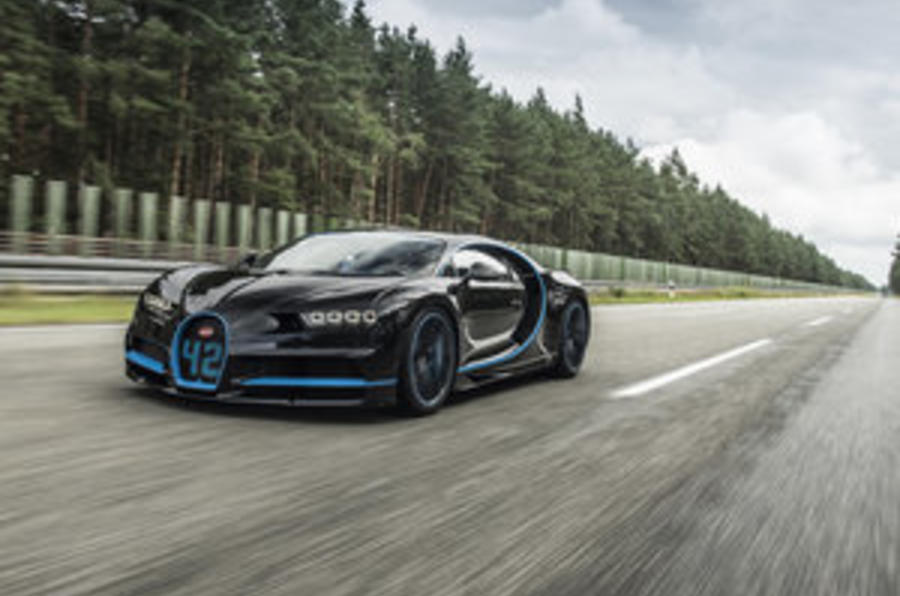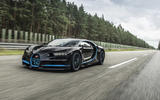The Bugatti Chiron has broken the world record for the fastest 0-400kph-0 (0-249mph-0) run, achieving the feat in 41.96sec.
Breaking the previous production car record, the Chiron covered 3112 metres with former Formula 1 driver Juan Pablo Montoya behind the wheel.
Bugatti plans to demonstrate the car’s top speed next year, when the new 1479bhp hypercar is expected to be faster than the 268mph recorded in the Veyron 16.4 Super Sport seven years ago. It eclipses the performance of its predecessor, the Veyron, although Bugatti is tight-lipped on how much quicker the Chiron is overall.
The record run was overseen by automotive technology company SGS-TÜV Saar. Montoya chose not to wear protective clothing, including a helmet, during the record run.
Montoya said: “Of course, the Chiron is a super sports car that requires your full attention when you are behind the wheel. At the same time, it gave me such a feeling of security and reliability that I was entirely relaxed and really enjoyed myself during my two days with the car."
Forty-two seconds is around the same as a Fiat 126 took to reach 62mph from standstill. The 126 sold 4.6 million units globally, though, while the Bugatti has so far sold 300 of the 500 Chirons in its production run.
Bugatti is showcasing the record-breaking car at the Frankfurt motor show this week; a special-edition car with number 42 on its grille will be shown.
Read more:
Next Bugatti Chiron set to be electrified
Video: Bugatti Chiron review | new 261mph hypercar tested
Bugatti's new Dubai showroom is its largest in the world
2016 Bugatti Chiron - every detail on the Veyron's 260mph+ successor
Bugatti Chiron gallery: the numbers behind the £2.5 million hypercar




















Join the debate
Add your comment
Chiron Record Relevance
Is this even relevant to anyone whatsoever!
I don't know, Jim - is that
Please don't tell me you're just typing out a Buggati press release?
Useful
I guess that having developed it, you have to find things to do with it. Personally, I feel developing everyday useful supercars is far more of an engineering achievement than ordinarilly unusable, so-called hypercars.